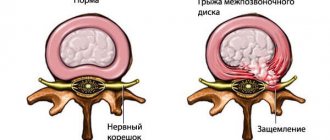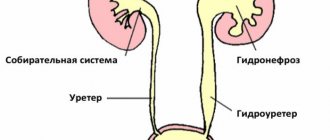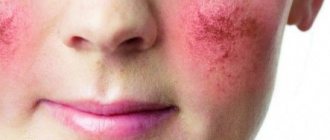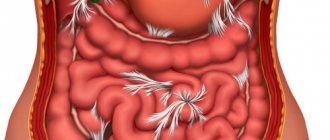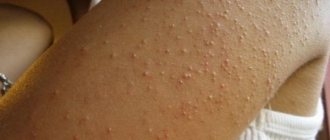Chorea It is considered a childhood disease that primarily occurs in children aged 5 to 16 years. During it, involuntary increased motor activity occurs.
The disease is neurological in nature and manifests itself as a rheumatic infection. Children who suffer from chorea minor have pronounced psycho-emotional disorders.
The pathology is treatable, but it should be understood that the therapy itself may take a long period of time. If measures are not taken in a timely manner, then the prognosis for the child will be extremely unfavorable.
Huntington's chorea disease - what is it?
The term “chorea ,” especially when it comes to children, often refers to any hyperkinesis that occurs as a result of a brain injury or infection, as well as congenital diseases, such as cerebral palsy.
Huntington's disease is a type of chorea that occurs as an independent disease and not as a symptom of other lesions.
Huntington's chorea refers to hereditary hyperkinesis, with which motor and mental disorders develop.
It manifests itself:
- in the form of obsessive movements that the patient does not control;
- decreased muscle tone and development of paresis;
- mood swings , depression and other severe symptoms.
Huntington's chorea its name in honor of the American psychiatrist who first described its symptoms. The disease is inherited; according to statistics, the disease appears more often in children if their fathers suffered from chorea, and less often in mothers.
The basis of the pathogenesis of chorea , as modern medicine believes, is a violation of DNA synthesis in neurons - the appearance of extra sequences of three nucleic acids. As a consequence, in one of the proteins synthesized in the nervous tissue, additional glutamine molecules appear in the amino acid sequence.
The defective protein does not perform its function and leads to the death of the neuron. As a result of massive death of neurons, motor and mental disorders are formed.
Huntington's chorea affects the striatum, the brain structures responsible for skeletal muscle tone and coordination of involuntary movements. These same structures are involved in the implementation of motor stereotypes, for example, walking or other actions that a person performs without thinking. It is in the striatum that the concentration of pathological proteins sharply arises.
The disease is chronic and progressive , that is, the patient’s condition worsens more and more over time, restoration of damaged functions does not occur, but, on the contrary, new symptoms appear.
Huntington's chorea disease in children
Despite the fact that chorea is a hereditary disease, its manifestations in children are quite rare. In children, other types of chorea are more common, caused by congenital or acquired disorders in the functioning of the brain.
Chorea can be caused in children by:
- Cerebral palsy , previous encephalitis, including tick-borne encephalitis;
- brain injuries
- rheumatic diseases;
- a rather rare congenital defect - Wilson-Konovalov disease;
- copper metabolism disorder , which is accompanied by other symptoms in addition to chorea.
If a child develops Huntington's chorea, it tends to be more severe and symptoms to rapidly intensify. In addition, a child, unlike an adult, cannot control the manifestations of the disease through willpower, so in him these manifestations are much more noticeable.
One of the characteristic symptoms is periodic convulsive seizures, which, unlike epileptic seizures, are not accompanied by loss of consciousness and amnesia.
Some medications used in adults cannot be administered to a child with Huntington's chorea , so it is more important for children to follow a regimen and diet that does not allow the disease to worsen. It is also important to take medications strictly as scheduled.
A child with chorea can attend school only with the permission of his or her attending physician. If the course is severe, he is transferred to home schooling.
Huntington's chorea minor
Lesser chorea is called hyperkinesis , which occurs as one of the manifestations of rheumatism. Despite the similarity of symptoms, it is very indirectly related to Huntington’s disease.
Lesser chorea , unlike Huntington's disease, develops in children and adolescents, less often in young men suffering from rheumatism.
The disease is based not on genetic mechanisms, but on autoimmune ones - rheumatism develops when the body’s own tissues are damaged by the body’s immune system after a staphylococcal infection. Minor chorea is not present all the time, but only during an exacerbation of rheumatism.
Symptoms of minor chorea are sweeping involuntary movements of the limbs, torso, head; an important feature is that the facial muscles are usually not involved.
The intensity of attacks of minor chorea does not change or decreases; in most patients, attacks stop several years after puberty. Mental disorders do not occur. In general, chorea minor is much less dangerous to the health and life of the patient than Henryton's disease.
Chorea
This is a less common neurological disease and is closely related to streptococcal infections.
The cause is acute rheumatic fever, an autoimmune disorder associated with ongoing streptococcal infection (eg, classic tonsillitis). If there is no antibiotic treatment for the infection, the immune system must fight it on its own, and in some cases it can affect certain tissues of the body. In Sydenham's chorea (minor rheumatic chorea), the immune system damages areas of the brain associated with movement control.
The disease, as the name suggests, manifests itself with symptoms of chorea, i.e. development of involuntary movements of the limbs and other parts of the body (grimaces, body movements, etc.). They are sometimes quite strange, tortuous, and do not depend on the will of a person. At the same time, other signs appear, including:
- headache;
- articulation disorder;
- gait disturbances;
- deterioration of fine motor skills (writing, fine manual work).
Along with neurological manifestations, signs of rheumatic fever (Sokolsky-Buyo disease, rheumatism) may develop.
For most people, Sydenham's chorea goes away, but this may take many months. In addition, personality changes and various psychiatric manifestations (in particular, obsessive-compulsive disorder) may develop.
In about 20% of Sydenham's chorea, one side of the body is more severely affected than the other.
Mental disorders accompanying Huntington's disease
The main danger of chorea is mental disorders.
Along with hyperkinesis, they are the most characteristic sign of the disease:
- Emotional lability , unstable mood, depressed mood are symptoms that are caused by a decrease in the amount of excitatory neurotransmitters.
- Memory impairment in the form of anterograde amnesia - the patient has difficulty remembering new information and has difficulty distinguishing faces.
- Hyperkinesis of the facial muscles makes speech slurred and filled with extraneous sounds. It is often impossible to understand what the patient is talking about. Changes may also affect the patient’s thinking - the inability to clearly formulate one’s thoughts makes communication with him very difficult, sometimes almost impossible.
- Depression with chorea is of a pronounced progressive nature, accompanied by suicidal thoughts and attempts, so strong that suicide often becomes the cause of the patient’s death. Apathy, delusional ideas of self-blame, and unmotivated aggression may also develop.
- Dementia develops in the later stages , when there are already pronounced hyperkinesis and mental disorders. Memory impairment occurs, the patient stops remembering people’s faces, loses the ability to care for himself, eat, dress independently, and maintain personal hygiene.
- Bad habits, such as alcoholism , intensify with chorea and lead to even greater destruction of the patient’s personality.
Causes of Huntington's chorea
Chorea is a genetic disease; it is inherited according to an autosomal dominant principle, that is, the pathological gene that determines the disease chorea is not related to gender and always appears if the patient has inherited it.
If one of the parents is sick with chorea, then in about half of the cases the children will also be sick. The risk is much higher if both parents are sick. It is believed that children of sick fathers get sick more often than children of sick mothers, but there is no explanation for this.
The affected gene encodes the development of pathological protein , which causes the death of neurons in the striatum of the brain, as a result, the functions for which these subcortical structures are responsible begin to fall out.
Despite the fact that the disease is inherited, it usually begins to manifest itself in adulthood, less often in adolescence. The occurrence of chorea in children is an extremely rare situation, and in this case its course is much more severe than usual.
Where does Huntington's disease come from?
When the basal ganglia of the brain are affected, the first manifestation of Chorea begins. The following are responsible for human behavior and accuracy of movement:
- substantia nigra;
- striatum;
- nuclei of the diencephalon and midbrain.
But everything is much more complicated - these areas have a close connection with other regulatory centers and zones that are responsible for memory and emotions. This also includes pathways. Therefore, when the basal ganglia are damaged, neurological disorders of varying degrees begin to occur.
If there is a congenital pathology, then protein synthesis is most often disrupted. As a result, brain cells begin to die. Huntington's chorea most often occurs as a consequence of other pathological changes in the body:
- ingestion of poison that affects the activity of the nervous system;
- cancerous tumors;
- injuries.
These factors can affect the communication of neurons, thereby giving rise to the manifestation of hyperkinetic syndrome.
Symptoms
The first symptoms of chorea are hyperkinesis :
- At first, involuntary movements appear in only one of the limbs; they occur in paroxysms, and the patient is able to suppress them by force of will.
- Over time, violent movements become more and more frequent, then constant, and more and more new muscle groups are involved in them - limbs, torso, neck, facial muscles.
- Over time, hyperkinesis covers most of the skeletal muscles, the patient's gait becomes dancing, accompanied by unnecessary movements, involuntary gestures, and grimaces.
- Hyperkinesis of the hands does not allow the patient to perform precise manipulations, then deprives him of the ability to dress, eat, and perform basic hygiene procedures independently.
- Constant grimaces make speech extremely unintelligible. The larynx can also be involved in hyperkinesis, and in this case, not only speech, but also breathing is impaired.
- In addition to hyperkinesis, there is another important motor symptom - muscle tone is steadily decreasing, which, in combination with involuntary movements, leads to disability of the patient.
- In later stages, the patient cannot move independently and must use a wheelchair or remain bedridden.
Treatment
If there is an underlying disease in the body that has led to the manifestation of choreic syndrome, all efforts are concentrated on eliminating it. The patient is treated depending on the degree of damage - in the hospital or at home. Treatment is carried out as follows:
- If a pathology occurs against the background of a toxic effect, then the source of poisoning is identified and it is blocked (they stop giving pills, remove the poison from the body, and other methods).
- If autoimmune degradation is present, the patient will require immunosuppressants. If there is a tumor in the body, it will need to be removed. This may be chemotherapy or radiotherapy, possibly surgery.
- If there are vascular diseases, then appropriate treatment with rehabilitation will be required. The latter sometimes takes a long time.
If there is a manifestation of a specific form of chorea, then Tetrabenazine is used - this is a new drug. It affects the part of the brain that controls movement. That is, unnecessary movements will be blocked and the patient will be in a state of relative peace. The course of treatment is quite long. The drug is expensive by our standards. And one more drawback - it cannot be used for depression, which often accompanies chorea.
Types of disease
There are two main types of disease:
- classical;
- juvenile
The difference between them is not only in the age of onset of the disease, but also in the predominant symptoms:
- with classical chorea, hyperkinesis comes first;
- in juvenile cases – muscle hypotonicity.
Mental abnormalities occur in both types and always progress steadily.
Main forms of the disease
Depending on which of the three groups of symptoms (hyperkinesis, hypotonicity, mental abnormalities) is most pronounced, several forms of chorea are distinguished:
- Classic or hyperkinetic form . The disease develops in adults after 35 years of age; hyperkinesis predominates among the symptoms.
- Akinetic-rigid, Westphalian or juvenile form. Develops in young people after 20 years of age or earlier, hyperkinesis is mild, symptoms of decreased muscle tone predominate. When analyzing, a higher concentration of pathological proteins is found than in the classical form.
- Mental. It develops at the same age as the classic one; symptoms are dominated by memory and thinking disorders and mood swings. Motor symptoms may be mild or almost absent.
Classification of hyperkinesis
Neurology presents several classifications of this disease. Among those actively used by doctors are the following:
1. According to the speed of movements performed by the patient:
- rapid hyperkinesis - chorea, myoclonus, tics, tremor, ballism;
- slow hyperkinesis – atheosis, torsion dystonia.
2. By type of development:
- spontaneous – develop regardless of external factors;
- promotional – provoked by voluntary motor acts;
- reflex – occur in response to external influences;
- induced - performed partly by the will of the patient, and can be partially restrained by him.
3. According to the nature of the flow:
- constant – tremor, athetosis;
- paroxysmal - appear periodically.
The classification according to the localization of pathological changes is important for medical practice, according to which the following types of hyperkinesis are distinguished:
- with damage to subcortical formations;
- with predominant disorders at the level of the brain stem;
- with dysfunction of cortical-subcortical structures.
Stem hyperkinesis
Characteristic signs of this type of pathology are involuntary movements performed with a certain rhythm and stereotyping.
The structure of such movements is simple. This type of violation includes:
- tremor;
- tics;
- facial hemispasm;
- hyperkinesis of the tongue;
- myoclonus;
- myorhythmias.
Subcortical hyperkinesis
Syndrome of involuntary movements of the subcortical type occurs as a result of damage to the extrapyramidal system. It includes the basal ganglia, the cerebellum, some parts of the motor cortex, the visual thalamus, and a number of nuclear formations of the brainstem. Taking this into account, neurologists note that generalized hyperkinesis can occur both as a consequence of neurological diseases and as a result of damage to the above-mentioned system. In some cases, pathology becomes a consequence of long-term use of certain medications - drug hyperkinesis.
Subcortical hyperkinesis is characterized by the presence of certain external signs:
- arrhythmia;
- asynchrony;
- variety of motor manifestations and their complex structure.
Subcortical-cortical hyperkinesis
This type of hyperkinesis occurs when the subcortex and cerebral cortex are damaged. They are distinguished by a wide variety of motor activities, which often represent a complex mixture. When diagnosing a disorder, the doctor is unable to trace the clear structure of the patient’s movements. In addition, they are not synchronous and can occur at any time.
Inheritance of Huntington's chorea
As already mentioned, chorea is inherited according to an autosomal dominant principle, and sick children are born in half the cases if one of the parents is sick, and in 75% if both are sick.
Since the chorea gene is dominant, sooner or later it manifests itself in each of its carriers. With the classic version of chorea, there is a possibility that the patient will die from other causes before he develops chorea, but his children may be sick.
Diagnosis of the disease
You can pre-diagnose minor chorea immediately. To clarify the diagnosis, the specialist must collect an anamnesis of the patient’s life. For this purpose, special research methods are used. In addition, the blood of a person suffering from this disease is taken for laboratory testing. It is in the blood test that the number of markers of rheumatoid factor, as well as reactive protein and streptococcal infection is revealed.
The key research method is the electroencephalogram. This procedure assumes that GM activity is examined using waves. Then, to study skeletal muscles, the doctor prescribes electromyography to the patient.
To detect focal changes in the brain, CT is prescribed.
Diagnostics
A preliminary diagnosis of Huntington's disease is made based on characteristic external signs - a combination of hyperkinesis, hypotonicity and mental disorders.
Laboratory and instrumental methods that allow you to confirm and clarify the diagnosis:
- MRI allows you to visualize brain lesions and determine their location (with chorea, these are always the striatum);
- CT scan reveals lesions in the myelin sheath of the brain. It is carried out to exclude demyelinating diseases;
- Positron emission tomography . This type of tomography allows you to determine how metabolic processes occur in the brain and see their disruption;
- Genetic testing reveals a defective gene in a patient;
Classification of chorea
Primary chorea is a hereditary disease. A number of genetic mutations and genes have been identified that are responsible for the development of pathology. Congenital forms of hyperkinetic syndrome include the following diseases:
- Huntington's chorea;
- Lesch-Nyhan disease;
- benign form of hereditary chorea;
- choreoacanthocytosis.
Secondary chorea occurs as a consequence of various factors and past diseases. In some cases it is led to:
- ischemic and hemorrhagic strokes;
- traumatic brain injury;
- benign and malignant brain tumors;
- viral encephalitis;
- atherosclerotic damage to cerebral vessels;
- tuberculous meningitis;
- systemic autoimmune diseases (lupus, vasculitis, thrombophilia);
- influence of neurotoxic substances (heavy metals, medications);
- mental disorders;
- Leigh's disease;
- hyperthyroidism;
- Fabry disease;
- phenylcuthonuria;
- mucopolysaccharidoses;
- Konovalov-Wilson disease;
- hypocalcemia;
- Niemann-Pick disease.
Treatment of Huntington's chorea
Chorea is a chronic disease that is characterized by steady progression, so it cannot be completely cured. The use of medications can slow down the development of the disease and preserve the patient’s ability to work longer.
Antipsychotics are considered the most effective medications for chorea - they prevent the development of hyperkinesis and have an antipsychotic effect. It is also recommended to undergo sanatorium-resort treatment and perform physical exercises that allow the patient to better control hyperkinesis.
Prevention
It is impossible to prevent the development of chorea because it is a genetic disease. Genetic testing can identify the defective gene in a patient who has a close relative with chorea before he or she develops the disease.
If the gene is identified, the doctor may recommend that the patient not have children.
Similarly, if the chorea gene is detected in the fetus during intrauterine examination, termination of pregnancy is recommended. In each of these cases, the final word remains with the patient. 09/19/2016
Etiology
The main cause of chorea minor is infection with group A hemolytic streptococcus.
Risk factors for developing the disease:
- genetic predisposition in children;
- rheumatism (inflammation of connective tissue);
- psychological trauma;
- increased excitability of the nervous system;
- tonsillitis (chronic tonsillitis);
- complication after respiratory diseases (ARVI);
- immunodeficiency;
- caries.
Most often, this disease affects children from 6 to 15 years old.


